Halloween
halloween
OR
pride month 2: electric spookaloo
More Posts from Oracleofthepast and Others


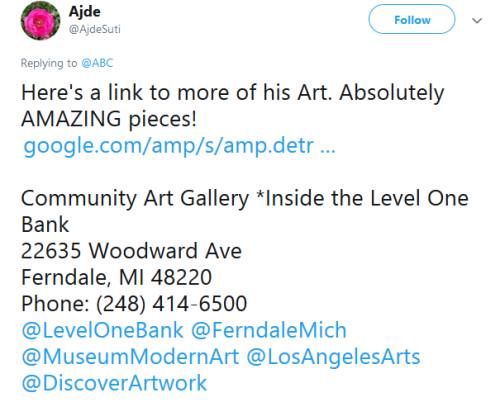


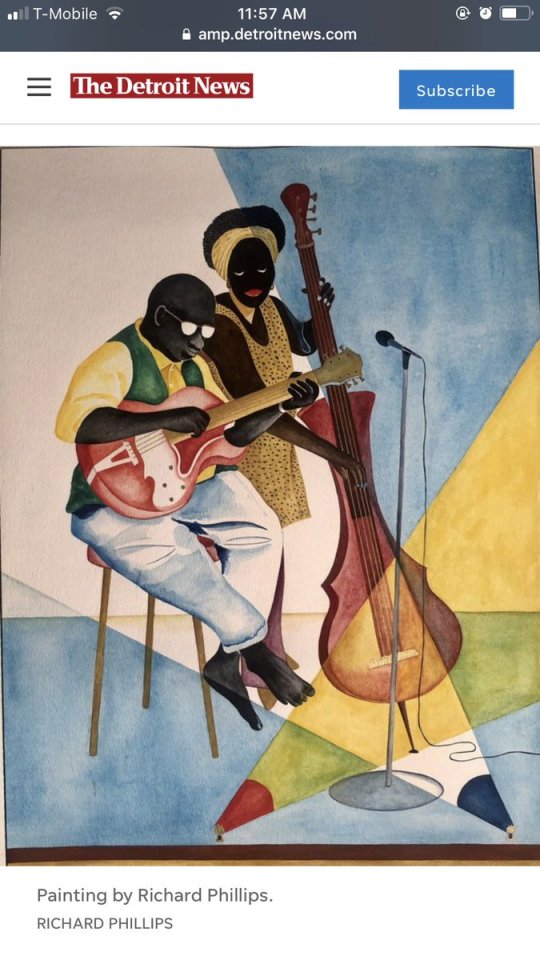
Can we support him please?!


Okay Bernie stans.
I need you all to prepare yourselves to vote for Biden in November.
I’m not happy about it either. I wanted Elizabeth Warren to destroy Trump on the debate floor. I wanted to watch her shatter the glass ceiling. I wanted student loan forgiveness, Medicare for All, and refugee and immigrant protections.
But I’m not going to get that. So I am going all in for Biden.
This can no longer be a matter of “well if I don’t get my way THEN I’M NOT VOTING”. I’d hoped you all learned your lessons four years ago, but from what I’ve seen on social media, that’s not been the case. Biden is not ideal but he is better than the alternative. He is a Democrat who will continue Obama’s legacy. And you have a shot in hell of getting progressive movements like Medicare for All under a blue majority Congress; we do not have that under Trump.
Biden is more willing to listen to the progressive factions of the Democrat party than Trump is. We will get shit done under him.
We cannot survive a second term of Trump. I need you all to hold your noses, put on your big girl pants, and deal with it. Prepare to vote for Biden.









What Happened To Kendrick Johnson and Why People Are Demanding Answers Even Now
On Jan. 11, 2013, the body of 17-year-old Kendrick Johnson was found in the most unusual of circumstances: upside-down and rolled up in a school gym mat. The mysterious death of Kendrick Johnson was initially ruled an accident by law enforcement asserting the ridiculous theory that Johnson must have accidentally fallen into the center of the mat while reaching for a sneaker
Some inconsistencies in the case:
the black and white gym shoe that lay on the ground below Kendrick Johnson, the one he was presumed to be reaching for, was lying on top of a pool of blood, but there was no blood on the shoe itself.
A hoodie and a pair of orange and black gym shoes were also found lying on the floor of the gym
traces of blood on the wall nearby that wasn’t Kendricks.
A private pathologist revealed Kendrick Johnson had suffered hemorrhaging on the right side of his neck, which meant that he likely died from blunt force trauma
the second autopsy revealed that some of Johnson’s organs were missing and in their place, his body had been stuffed with newspaper.
A whole hour of footage from the gym was missing, right at the time which would have shed light on what happened that day
HOW YOU CAN HELP:
- Donate to his family! (they're nowhere near their goal)
- Sign the petition
SPREAD THIS AND HIS STORY!!!
Follow for more news
#StayWoke
#WhatHappenedToKendrickJohnson




Toucan discovers a traffic cam. video
For Those Who Must Eat During Yom Kippur
Rofei chol basar – Healer of all living creatures:
I thank You for the breath that is in me
for the community of Israel that lives
for the possibilities of today and tomorrow.
May my eating be as a fast;
May it be dedicated to you, to t’shuvah–
to the renewal and restoration of my relationship
to You, to others, and to myself.
Source: Mishkahn HaNefesh for Yom Kippur (p. 10)
In linguistics, a filler is a sound or word that is spoken in conversation by one participant to signal to others that he/she has paused to think but is not yet finished speaking. These are not to be confused with placeholder names, such as thingamajig, which refer to objects or people whose names are temporarily forgotten, irrelevant, or unknown.
In Afrikaans, ah, em, and eh are common fillers.
In Arabic, يعني yaʿni (“I mean”) and وﷲ wallāh(i) (“by God”) are common fillers.[2][3][4]
In American Sign Language, UM can be signed with open-8 held at chin, palm in, eyebrows down (similar to FAVORITE); or bilateral symmetric bent-V, palm out, repeated axial rotation of wrist (similar to QUOTE).
In Bengali, mane (“it means”) is a common filler.
In Catalan, eh /ə/, doncs (“so”), llavors (“therefore”), and o sigui (“it means”) are common fillers.
In Czech, tak or takže (“so”), prostě (“simply”), jako (“like”) are used as fillers. Čili (“or”) and že (“that”, a conjunction) might also be others. A person who says jako and prostě as fillers might sound a bit simple-minded to others.[5]
In Danish, øh is one of the most common fillers.
In Dutch, eh, ehm, and dus are some of the more common fillers.
In Esperanto, do (“therefore”) is the most common filler.
In Filipino, ah, eh, ay, and ano are the most common fillers.
In Finnish, niinku (“like”), tota, and öö are the most common fillers.
In French, euh /ø/ is most common; other words used as fillers include quoi (“what”), bah, ben (“well”), tu vois (“you see”), and eh bien (roughly “well”, as in “Well, I’m not sure”). Outside of France, other expressions are tu sais (“you know”), t’sais’veux dire? (“you know what I mean?”), or allez une fois (“go one time”). Additional filler words include genre (“kind”), comme (“like”), and style (“style”; “kind”)
In German, a more extensive series of filler words, called modal particles, exists, which actually do give the sentence some meaning. More traditional filler words are äh /ɛː/, hm, so /zoː/, tja, and eigentlich (“actually”)
In Hebrew, eh is the most common filler. Em is also quite common.
In Hindi, matlab (“it means”) and “Mah” are fillers.
In Hungarian, common filler words include hát (well…) and asszongya (a variant of azt mondja, which means “it says here…”).
In Icelandic, a common filler is hérna (“here”). Þúst, a contraction of þú veist (“you know”), is popular among younger speakers.
In Indonesian (Bahasa Indonesia), anu is one of the most common fillers.
In Italian, common fillers include “tipo” (“like”), “ecco” (“there”) and “cioè” (“actually”)
In Irish Gaelic, abair /ˈabˠəɾʲ/ (“say”), bhoil /wɛlʲ/ (“well”), and era /ˈɛɾˠə/ are common fillers, along with emm as in Hiberno-English.
In Japanese, common fillers include eetto, ano, sono, and ee.
In Kannada,Matte for also,Enappa andre for the matter is are the common fillers.
In Korean, eung, eo, ge, and eum are commonly used as fillers.
In Lithuanian, nu, am and žinai (“you know”) are common fillers.
IN Maltese and Maltese English, mela (“then”), or just la, is a common filler.
In Mandarin Chinese, speakers often say 这个 zhège/zhèige (“this”) or 那个 nàge/nèige (“that”). Another common filler is 就 jìu (“just/precisely”).
In Norwegian, common fillers are øh, altså, på en måte (“in a way”), ikke sant (literally “not true?”, “no kidding”, or “exactly”), vel (“well”), and liksom (“like”). In Bergen, sant (“true”) is often used instead of ikke sant. In the Trøndelag region, skjø’ (“see?” or “understand?”) is also a common filler.
In Persian, bebin (“you see”), چیز “chiz” (“thing”), and مثلا masalan (“for instance”) are commonly-used filler words. As well as in Arabic and Urdu, يعني yaʿni (“I mean”) is also used in Persian. Also, eh is a common filler in Persian.
In Portuguese, tipo (“like”) is the most common filler.
In Romanian, deci /detʃʲ/ (“therefore”) is common, especially in school, and ă /ə/ is also very common (can be lengthened according to the pause in speech, rendered in writing as ăăă), whereas păi /pəj/ is widely used by almost anyone.
In Russian, fillers are called слова-паразиты (“vermin words”); the most common are Э-э (“eh”), это (“this”), того (“that”), ну (“well”), значит (“it means”), так (“so”), как его (“what’s it [called]”), типа (“like”), and как бы (“[just] like”).
In Serbian, znači (“means”) and ovaj (“this”) are common fillers.
In Slovak, oné (“that”), tento (“this”), proste (“simply”), or akože are used as fillers. The Hungarian izé (or izí in its Slovak pronunciation) can also be heard, especially in parts of the country with a large Hungarian population. Ta is a filler typical of Eastern Slovak and one of the most parodied features.
In Slovene, pač (“but”, although it has lost that meaning in colloquial, and it is used as a means of explanation), a ne? (“right?”), and no (“well”) are some of the fillers common in central Slovenia, including Ljubljana.
In Spanish, fillers are called muletillas. Some of the most common in American Spanish are e /e/, este (“this”), and o sea (roughly means “I mean”).[6], in Spain the previous fillers are also used, but ¿Vale? (“right?”) and ¿no? are very common too.
In Swedish, fillers are called utfyllningsord; some of the most common are öhm, ja (“yes”), ba (comes from “bara”, which means “just”), asså or alltså (“therefore”, “thus”), va (comes from “vad”, which means “what”), and liksom and typ (both similar to the English “like”).
In Ukrainian, ой /ɔj/ is a common filler.
In Urdu, yani (“meaning…”), falan falan (“this and that”; “blah blah”), umm, and aaa are also common fillers.
In Telugu, ikkada entante (“Whats here is…”) and tarwatha (“then…”) are common and there are numerous like this.
In Tamil, paatheenga-na (“if you see…”) and apparam (“then…”) are common.
In Turkish, yani (“meaning…”), şey (“thing”), “işte” (“that is”), and falan (“as such”, “so on”) are common fillers.
In Welsh, de or ynde is used as a filler (loosely the equivalent of “You know?” or “Isn’t it?”). Ym… and Y… are used similarly to the English “um…”.
It’s strange getting over suicidal thoughts because your mind is like “hey if you do this, you could easily kill yourself” and then you’re like “oh cool...wait, I don’t want to die!”
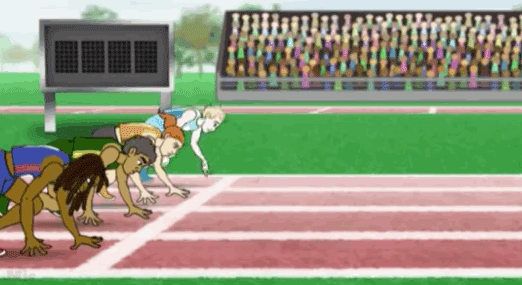
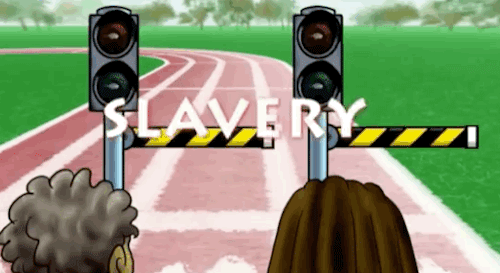

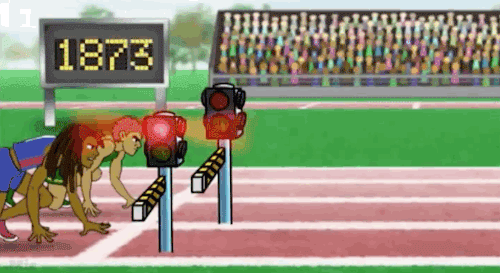
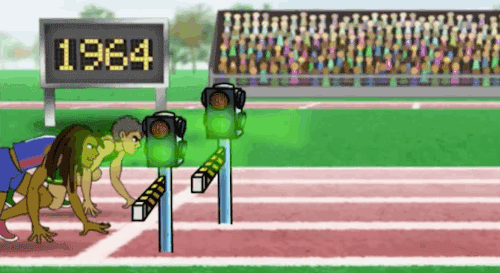
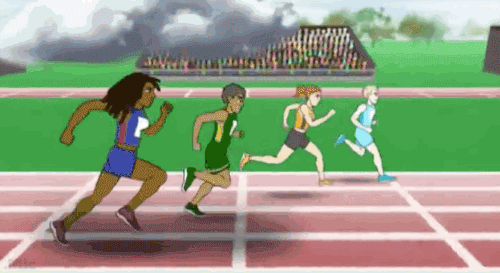

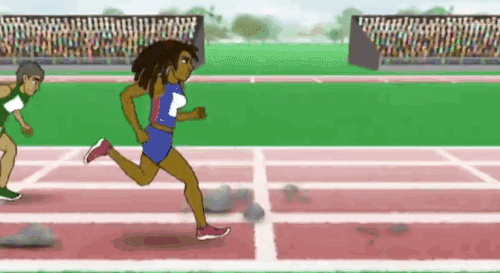
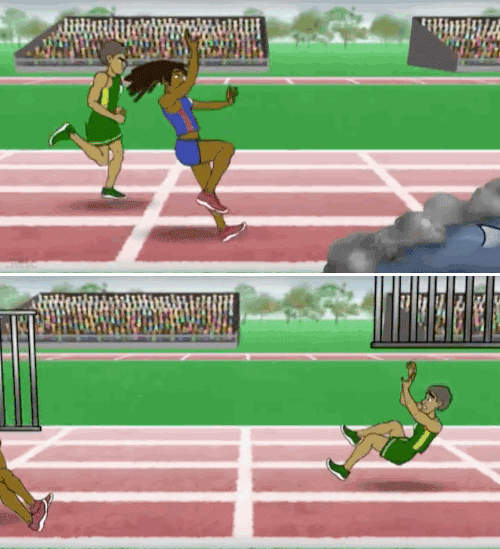
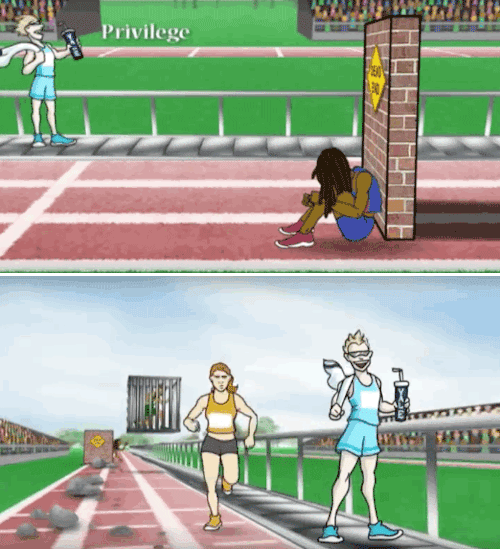
The above video titled “The Unequal Opportunity Race” was screened as part of a schoolwide Black History Month program at Glen Allen High School in Glen Allen, Virginia. Some parents apparently weren’t thrilled about that. One local grandparent had two words for what this video was pushing on white kids.
-
 alisilan liked this · 1 month ago
alisilan liked this · 1 month ago -
 piedaterreincensorshipville reblogged this · 7 months ago
piedaterreincensorshipville reblogged this · 7 months ago -
 piedaterreincensorshipville liked this · 7 months ago
piedaterreincensorshipville liked this · 7 months ago -
 lamaenthel reblogged this · 7 months ago
lamaenthel reblogged this · 7 months ago -
 regularus liked this · 7 months ago
regularus liked this · 7 months ago -
 tophatdoggo liked this · 7 months ago
tophatdoggo liked this · 7 months ago -
 lilacliam reblogged this · 7 months ago
lilacliam reblogged this · 7 months ago -
 initforthepasta liked this · 7 months ago
initforthepasta liked this · 7 months ago -
 shell-lee-inc reblogged this · 7 months ago
shell-lee-inc reblogged this · 7 months ago -
 shell-lee-inc liked this · 7 months ago
shell-lee-inc liked this · 7 months ago -
 mieczyhale reblogged this · 7 months ago
mieczyhale reblogged this · 7 months ago -
 solorfainiel reblogged this · 7 months ago
solorfainiel reblogged this · 7 months ago -
 kittyfeathersflying reblogged this · 7 months ago
kittyfeathersflying reblogged this · 7 months ago -
 touch-starved-lurker liked this · 7 months ago
touch-starved-lurker liked this · 7 months ago -
 furby-with-a-gun reblogged this · 7 months ago
furby-with-a-gun reblogged this · 7 months ago -
 furby-with-a-gun liked this · 7 months ago
furby-with-a-gun liked this · 7 months ago -
 lottiefairchildbranwell reblogged this · 7 months ago
lottiefairchildbranwell reblogged this · 7 months ago -
 onyxmustdie reblogged this · 7 months ago
onyxmustdie reblogged this · 7 months ago -
 axeofsuns reblogged this · 7 months ago
axeofsuns reblogged this · 7 months ago -
 lynx-brynjar reblogged this · 7 months ago
lynx-brynjar reblogged this · 7 months ago -
 lynx-brynjar liked this · 7 months ago
lynx-brynjar liked this · 7 months ago -
 thethousandthhaunt reblogged this · 7 months ago
thethousandthhaunt reblogged this · 7 months ago -
 thethousandthhaunt liked this · 7 months ago
thethousandthhaunt liked this · 7 months ago -
 2ws2ls reblogged this · 7 months ago
2ws2ls reblogged this · 7 months ago -
 joonok liked this · 7 months ago
joonok liked this · 7 months ago -
 spextkrr reblogged this · 7 months ago
spextkrr reblogged this · 7 months ago -
 spextkrr liked this · 7 months ago
spextkrr liked this · 7 months ago -
 onyxmustdie reblogged this · 7 months ago
onyxmustdie reblogged this · 7 months ago -
 onyxmustdie liked this · 7 months ago
onyxmustdie liked this · 7 months ago -
 i-high-fived-your-face liked this · 7 months ago
i-high-fived-your-face liked this · 7 months ago -
 thegoatinthealleyway liked this · 7 months ago
thegoatinthealleyway liked this · 7 months ago -
 krakenoid reblogged this · 7 months ago
krakenoid reblogged this · 7 months ago -
 krakenoid liked this · 7 months ago
krakenoid liked this · 7 months ago -
 insectsgetcooked liked this · 7 months ago
insectsgetcooked liked this · 7 months ago -
 0rions-belt liked this · 7 months ago
0rions-belt liked this · 7 months ago -
 lord-heirop reblogged this · 7 months ago
lord-heirop reblogged this · 7 months ago -
 lord-heirop liked this · 7 months ago
lord-heirop liked this · 7 months ago -
 tassiethylacine reblogged this · 7 months ago
tassiethylacine reblogged this · 7 months ago -
 tassiethylacine liked this · 7 months ago
tassiethylacine liked this · 7 months ago -
 phantaloon reblogged this · 7 months ago
phantaloon reblogged this · 7 months ago -
 grindthebones reblogged this · 7 months ago
grindthebones reblogged this · 7 months ago -
 scaredofducks reblogged this · 7 months ago
scaredofducks reblogged this · 7 months ago -
 seriouslydidijustdothat reblogged this · 7 months ago
seriouslydidijustdothat reblogged this · 7 months ago -
 fearthesilverferret reblogged this · 7 months ago
fearthesilverferret reblogged this · 7 months ago -
 shelf-life-of-the-party liked this · 7 months ago
shelf-life-of-the-party liked this · 7 months ago -
 bottlingsound liked this · 7 months ago
bottlingsound liked this · 7 months ago -
 twobitcathedral reblogged this · 7 months ago
twobitcathedral reblogged this · 7 months ago -
 twobitcathedral liked this · 7 months ago
twobitcathedral liked this · 7 months ago
